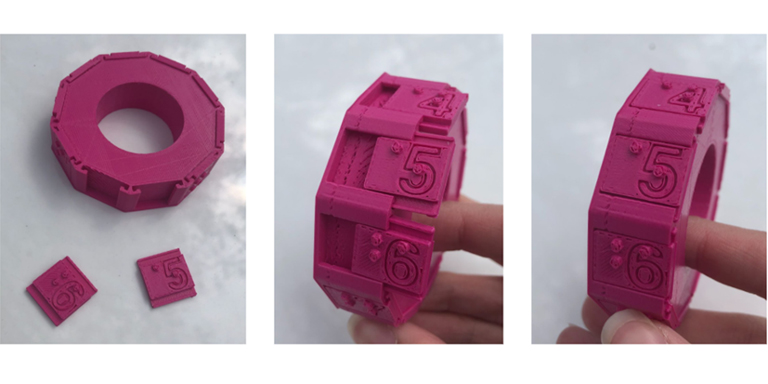Jon Racek
Area Coordinator and Senior Lecturer, Comprehensive Design; Co-Director, ServeDesign Center
Eskenazi School of Art, Architecture, and Design
An architect, designer, and area head of Comprehensive Design at the Eskenazi School of Art, Architecture, and Design, Jon Racek brings his interest in the social impact of design to the classroom.
Jon Racek believes that, when students see the practical benefits and purpose of the work they are doing, they are more motivated and excited to learn. 3D printing and virtual reality (VR) are an important part of his students’ education, and they are quickly becoming an industry standard in design. Ultimately, Racek wants to give his students access to the best tools possible for future-forward and impactful careers.
“Seeing an object like a 3D printed or VR model of a chemical molecule and being able to interact with it adds another level of thought to your teaching,” says Racek. "Students feel like they are doing real work in their studies. They get design feedback from real world development experts, make their designs come to life in VR, and even experience how their designs can help people with disabilities function better in the world."
3D printed objects are a key component of Racek’s course on "Topical Issues in Comprehensive Design." One project aims to provide employment and essential tools to a community near Musanze, Rwanda. With the help of a partner professor at the INES Ruhengeri-Institute of Applied Sciences, an assessment of needed tools was completed with over 800 families. Armed with a list of these needs, Racek’s students set out to design them. Racek gives the students two criteria: their objects must have at least one 3D printed part and the rest of the materials for the object must be available locally (meaning in Rwanda).
Students that have never been outside of the United States, much less Indiana, are learning a valuable lesson about their own cultural perspective. To design tools appropriate for the Rwandan community, the students need to learn about life in Rwanda. Once the students have prototyped their design here at IU’s 3D printers, Racek emails the file to the 3D printer at the partner university. Thus far, students have designed items like agricultural tools, simple medical and accessibility tools, water filters, and more. It is a rewarding project in which the students receive practical feedback and can see the real-life impact of their hard work.
“Like any emerging technology, it’s all about trying to find the right application for it.” In his opinion, making keychains and phone cases is not the way to utilize 3D printing. He wants students to see the practical and important uses 3D printing can provide in any subject area. Eventually, the hope for this project is that it will become fully sustainable by creating much needed tools for Rwandans that they can sell to pay for more 3D printers and the materials needed to make the objects.
Racek is also pursuing grants and other means to fund more access to VR for his students. Currently, Racek uses the Kirkwood Hall 016 Virtual Reality lab to teach his students about VR. For architectural projects, Racek’s comprehensive design students use VR to prototype spaces; and for product or furniture design products, students can use VR applications like Gravity Sketch as a sculpting tool to model and mold their product prototype. Because of limited hardware and classroom space, he is only able to introduce students to VR in short-term projects, but hopes for more access to VR headsets in the future so his students can complete full course modules.
“Using VR in architecture and design allows students to walk through buildings and prototype architectural designs at full scale,” says Racek. "Instead of seeming like a giant staring down at a small scale model, students can walk through their designed spaces and see what works and what doesn’t." Better yet, they can have other people walk through and provide feedback before going too far down a particular path.
His advice for instructors interested in using 3D printing or VR with their students: “Learn how to do it yourself. You have to become pretty proficient before you open it up to a class.” And faculty can indeed learn how to use 3D printing and VR with their students by contacting the UITS Advanced Visualization Lab, which assists faculty and staff with virtual reality, data visualization, and other 3D visualization projects; campus teaching and learning centers; local IU makerspaces (visit the IU Knowledge Base for details and more resources); or UITS Student Outreach.
The future for Racek’s students is full of potential now that they have the most current digital skills to help them excel in the art, architecture, and design fields. Now that they understand the many potential applications of 3D printing and VR for design, they will be able to bring in these technologies alongside other approaches. With the knowledge and skills to present their work using these emerging technologies, they'll have a definite leg up on other new professionals who don’t have those skills.






